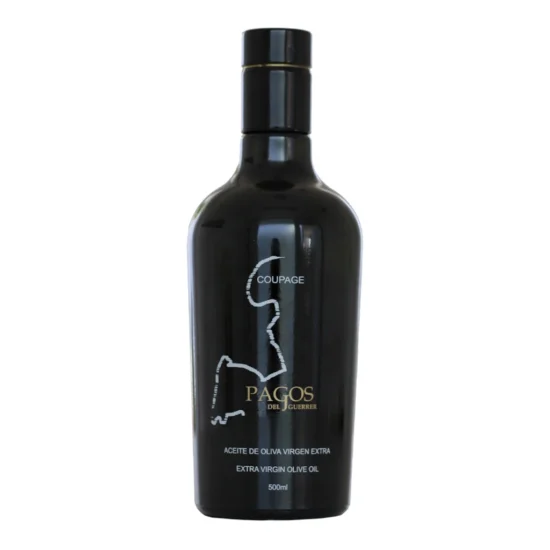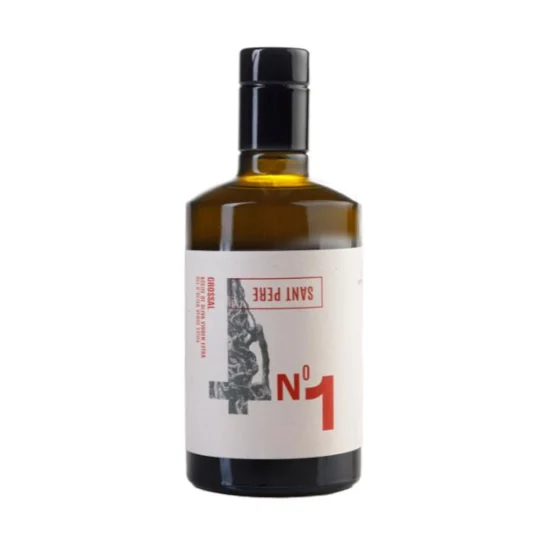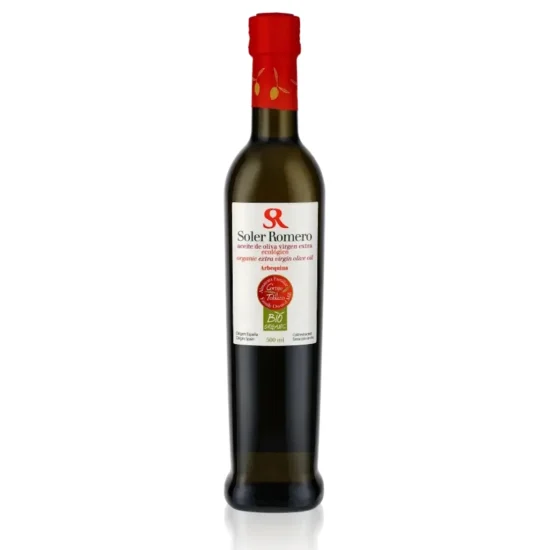
Biophenols are minor polar phenolic compounds found in olive oils, such as natural and oxidized derivatives of oleuropein and ligustroside, lignans, flavonoids, and phenolic acids. Recent research concludes that consuming extra virgin olive oil rich in oleocanthal and oleacein also induces weight loss, a decrease in body mass index, and fasting blood glucose.
The study, published in Clinical Nutrition, found that consuming extra virgin olive oil rich in biophenols for one month increased antioxidant defenses in the blood and decreased parameters associated with oxidative stress and inflammation, underlying conditions of both prediabetes and obesity.
One group of participants consumed biophenol-rich extra virgin olive oil, while the other group consumed non-virgin olive oil for 30 days. Both oils were consumed cooked and raw, but the exact amount consumed was not measured. The main findings were changes in oxidative stress, an improved antioxidant profile, and a decrease in some enzymes relevant to oxidative stress.
Lipid peroxidation is a common feature of oxidative stress, and we found that these individuals had less oxidation of their blood lipids. This is in line with all the previous basic research that had been conducted with these polyphenols.
In the study, the researchers described that three key inflammation-reducing compounds increased after consuming extra virgin olive oil, suggesting a greater ability to modulate systemic inflammation compared to olive oil. Oleocanthal and oleacein could be mediating this latter effect because their anti-inflammatory actions are well documented.
Obesity is a condition in which there is low-grade inflammation and also oxidative stress. While there is still some disagreement, there is a growing consensus that oxidative stress precedes the development of inflammation.
This low-grade inflammation is linked to insulin resistance. Insulin resistance is linked to the failure of beta cells to produce sufficient insulin, which leads to hyperglycemia and then a state in which the body cannot control blood glucose levels.
Polyphenols in Olive Oil
General interest in antioxidants and extra virgin olive oil is growing, as they are crucial not only because they impact the organoleptic qualities of extra virgin olive oil, but also because of its nutritional qualities.
Along with their impact on flavor, polyphenols preserve the fatty acids in extra virgin olive oil, increasing its shelf life and nutritional qualities. Therefore, given the crucial role polyphenols play, researchers hope that, in the future, their presence in food products will be measured and reported to consumers.
Today, many producers already tell their customers that their olive oil is rich in polyphenols, so it will be useful for consumers to also know how much. In fact, while many excellent olive oils may have a lower polyphenol count, it would be interesting to know their exact volume and whether it is intended to exert relevant antioxidant activity.
The polyphenols in extra virgin olive oil enhance the healing capabilities of fibroblasts, opening up possibilities for new wound healing applications. A new study found that certain polyphenols in extra virgin olive oil enhanced the healing actions of fibroblasts, cells essential for forming connective tissue.
Fibroblasts play a crucial role in repairing skin damaged by injuries or cuts. The research, published in Nutrients, paves the way for the future use of polyphenol-based applications to heal wounded skin. These components release compounds that hold all the skin’s components together—they are the network that holds everything together—and that is why their action is so relevant.
Scientists focused on how fibroblast behavior would be affected by applying hydroxytitrosol, tyrosol, and oleocanthal, the most prevalent polyphenols in virgin olive oil. These three phenols were chosen because previous researchThe polyphenols demonstrated their interesting behavior when applied to different tissue cells, such as osteoblasts and bone cells.
The research showed that these phenolic compounds stimulated fibroblast growth when applied. This is a very relevant result, since when the skin is wounded, stimulating the development of a greater number of fibroblasts would result in better healing.
However, this was not the only result they observed, as the polyphenols also affected the behavior of the fibroblasts under in vitro conditions. Thus, when exposed to the phenolic compounds, the fibroblasts migrated, meaning they moved to close the space caused by the wound, benefiting their healing action.
In addition, the fibroblast growth observed by the researchers in the laboratory environment did not show any cellular alterations. In this sense, when cell growth stimulation therapies are applied, a possible negative outcome is uneven growth of the cells themselves, or cell mutations that could be dangerous.
That’s why the scientists developed an experiment that highlights how polyphenol-stimulated cell growth is safe. In fact, one of the experiments focused on this and showed that the cells do not have any DNA aneuploidy, meaning they show no signs that those cells could be mutating.
The scientists highlighted how their research is part of a growing body of studies focusing on the impact of polyphenols on human tissues and cellular profiles. Previous research found that other phenols in extra virgin olive oil also stimulated fibroblast proliferation and migration.
Other studies have also suggested the role of phenols in regulating the wound healing process and their potential protective action against age-related changes in fibroblasts. However, the pursuit of using extra virgin olive oil as an effective wound healing tool will require further study. Examples of future solutions could be hydrogels or creams.
However, applying phenols directly to fibroblasts in a laboratory setting is different than in real life, such as with a wound on human skin, as applying phenols directly to fibroblasts could be challenging, as using extra virgin olive oil on the skin would only reach the skin surface. A medium is needed to transport the phenols where needed.
In this regard, the next step would be to design a mechanism in the laboratory with which we can effectively introduce phenols. Once this is achieved, we will be one step closer to creating real-life applications derived from extra virgin olive oil, and it is important to define and identify potential adverse effects, even if they are not expected.
The development of a remedy that offers new options to doctors, nurses, and patients treating skin wounds could also be obtained sustainably, since during olive processing, polyphenol-rich wastewater is commonly discarded after olive oil production. Therefore, it would be interesting to isolate the compounds we need within a raw material that is currently not attractive to the market.
The University of Minnesota (USA) presented a study on a nutraceutical intervention with high-phenolic extra virgin olive oil and curcumin. Scientific research indicates that high-phenolic extra virgin olive oil (HPEVOO) can play an important role in combating many diseases.
Multiple sclerosis (MS)
There is no cure for multiple sclerosis (MS), a common neurodegenerative disease involving chronic inflammation of the central nervous system. At AHEPA Hospital in Thessaloniki, Greece, 24 MS patients received 50 ml of high-phenolic extra virgin olive oil daily after lunch, while a control group of 20 did not receive extra virgin olive oil.
After 12 months of high-phenolic EVOO, preliminary results showed improved processing speed, cognitive flexibility, memory, and overall quality of life, with less dysphoria, sadness, and fatigue experienced by patients who used high-phenolic EVOO in addition to their usual treatment.
NeurofibromAtosis type 1 (NF1)
NF1 symptoms include benign and malignant tumors, unsightly, painful, or itchy skin conditions, headaches, and high blood pressure. NF1 can lead to blindness and cancer of the nerve sheath or breast.
Given existing evidence that a diet rich in olive oil has anti-inflammatory and anticancer properties, preclinical research was conducted using NF1 mice and found that curcumin combined with oleocanthal from olive oil caused NF1 tumors in mice to shrink.
The next step was a small, one-year clinical trial (15 people) of curcumin with olive oil at the University of Minnesota. In this FDA-approved study, promising preliminary results included reports of reduced itching, headaches, and pain in several patients.
Animal studies show that olive oil phenols, oleocanthal and oleacein, can work together with cannabinoids (CBD) to fight TRPA1 channels that are overexpressed in melanoma, breast cancer, and liver cancer; this phenolic combination also demonstrated a powerful antiepileptic effect.
Metabolic syndrome is a combination of conditions that can lead to heart disease, stroke, diabetes, and other problems. Metabolic syndrome conditions include abdominal obesity, high blood pressure, high blood sugar, high triglycerides, and low levels of “good” cholesterol.
This three-month, double-blind study compares a placebo with Thousand Olives, the world’s first dietary supplement containing oleocanthal extracted from olive oil. This supplement contains 5 mg of four of the most important phenols in olive oil (the equivalent of the phenolic compounds in 1,000 olives, or 1.5 tablespoons of olive oil).
Important Note: aceitedelcampo.com promotes the consumption of extra virgin olive oil for its culinary qualities and health benefits. However, no medication or current treatment should be replaced without the guidance of a healthcare professional.




ALZAYT EXPORT SL
info@aceitedelcampo.com
C/ Eduardo Bosca 19, 2-5
46023 Valencia
Subscribe and receive a coupon by email for your next purchase.